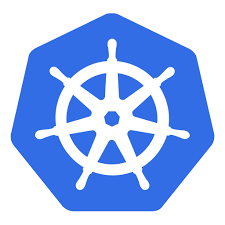Configure liveness, readiness, and startup probes
Hai semuanya, di materi kali ini kita akan membahas lebih detail tentang Container probe diantaranya Liveness, Readiness and Startup Probes dalam suatu Pod Specification. Diantaranya:
- What the different between liveness, readiness and startup probe?
- When should you use container probe?
- Container probes of fields
- Configure liveness probe in a Pod
- Configure readiness probe in a Pod
- Configure startup probe in a Pod
Ok langsung aja kita bahas materi yang pertama
What the different between liveness, readiness and startup probe?
Sebelum kita menggunakan atau men-configure container probe untuk liveness, readiness dan startup kita bahas dulu perbedaannya ya. Ok kita mulai bahas satu-per-satu mulai dari yang paling umum digunakan yaitu liveness probe.
The kubelet uses liveness probes to know when to restart a container. For example, liveness probes could catch a deadlock, where an application is running, but unable to make progress. Restarting a container in such a state can help to make the application more available despite bugs.
The kubelet uses readiness probes to know when a container is ready to start accepting traffic. A Pod is considered ready when all of its containers are ready. One use of this signal is to control which Pods are used as backends for Services. When a Pod is not ready, it is removed from Service load balancers.
The kubelet uses startup probes to know when a container application has started. If such a probe is configured, it disables liveness and readiness checks until it succeeds, making sure those probes don’t interfere with the application startup. This can be used to adopt liveness checks on slow starting containers, avoiding them getting killed by the kubelet before they are up and running.
Untuk lebih memahami berikut adalah diagram timeline state managementnya:
When should you use container probe?
Nah ini juga bagian penting dari section sebelumnya, kapansih kita harus menggunakan container probes khususnya untuk Liveness, Readiness dan Startup Probe. Yukk kita bahas satu-per-satu, mulai dari Liveness Probe:
If the process in your container is able to crash on its own whenever it encounters an issue or becomes unhealthy, you do not necessarily need a liveness probe; the kubelet will automatically perform the correct action in accordance with the Pod’s restartPolicy.
If you’d like your container to be killed and restarted if a probe fails, then specify a liveness probe, and specify a restartPolicy of Always or OnFailure.
Kemudian kita bahas Readiness Probe:
If you’d like to start sending traffic to a Pod only when a probe succeeds, specify a readiness probe. In this case, the readiness probe might be the same as the liveness probe, but the existence of the readiness probe in the spec means that the Pod will start without receiving any traffic and only start receiving traffic after the probe starts succeeding.
If you want your container to be able to take itself down for maintenance, you can specify a readiness probe that checks an endpoint specific to readiness that is different from the liveness probe.
If your app has a strict dependency on back-end services, you can implement both a liveness and a readiness probe. The liveness probe passes when the app itself is healthy, but the readiness probe additionally checks that each required back-end service is available. This helps you avoid directing traffic to Pods that can only respond with error messages.
Dan finally yang terakhir yaitu Startup Probe:
Startup probes are useful for Pods that have containers that take a long time to come into service. Rather than set a long liveness interval, you can configure a separate configuration for probing the container as it starts up, allowing a time longer than the liveness interval would allow.
If your container usually starts in more than initialDelaySeconds + failureThreshold × periodSeconds, you should specify a startup probe that checks the same endpoint as the liveness probe. The default for periodSeconds is 10s. You should then set its failureThreshold high enough to allow the container to start, without changing the default values of the liveness probe. This helps to protect against deadlocks.
Container probes of fields
Probes have a number of fields that you can use to more precisely control the behavior of liveness and readiness checks:
initialDelaySeconds: Number of seconds after the container has started before liveness or readiness probes are initiated. Defaults to0 seconds. Minimum value is0.periodSeconds: How often (in seconds) to perform the probe. Default to10 seconds. Minimum value is1.timeoutSeconds: Number of seconds after which the probe times out. Defaults to1 second. Minimum value is1.successThreshold: Minimum consecutive successes for the probe to be considered successful after having failed. Defaults to1. Must be1for liveness and startup Probes. Minimum value is1.failureThreshold: When a probe fails, Kubernetes will try failureThreshold times before giving up. Giving up in case of liveness probe means restarting the container. In case of readiness probe the Pod will be marked Unready. Defaults to3. Minimum value is1.
HTTP probes have additional fields that can be set on httpGet:
host: Host name to connect to, defaults to the pod IP. You probably want to set “Host” in httpHeaders instead.scheme: Scheme to use for connecting to the host (HTTP or HTTPS). Defaults to HTTP.path: Path to access on the HTTP server. Defaults to/.httpHeaders: Custom headers to set in the request. HTTP allows repeated headers.port: Name or number of the port to access on the container. Number must be in the range1 to 65535.
For a TCP probe, the kubelet makes the probe connection at the node, not in the pod, which means that you can not use a service name in the host parameter since the kubelet is unable to resolve it.
Configure liveness command in a Pod
Many applications running for long periods of time eventually transition to broken states, and cannot recover except by being restarted. Kubernetes provides liveness probes to detect and remedy such situations.
Contoh sederhannya seperti, misalnya kita menjalankan program yang sifatnya running di background / service. Untuk mendeteksi program tersebut tetap berjalan kita bisa check menggunakan output yang di keluarkan oleh program tersebut seperti log file dan lain-lain. Jadi klo kita coba buat configurasinya seperti berikut:
In the configuration file, you can see that the Pod has a single Container. The periodSeconds field specifies that the kubelet should perform a liveness probe every 5 seconds. The initialDelaySeconds field tells the kubelet that it should wait 5 seconds before performing the first probe. To perform a probe, the kubelet executes the command cat /tmp/healthy in the target container. If the command succeeds, it returns 0, and the kubelet considers the container to be alive and healthy. If the command returns a non-zero value, the kubelet kills the container and restarts it.
When the container starts, it executes this command:
/bin/sh -c "touch /tmp/healthy; sleep 30; rm -f /tmp/healthy; sleep 600"Jika di jalankan hasilnya seperti berikut:
» kubectl apply -f 02-workloads/01-pod/pod-probe-liveness-command.yaml
pod/pod-probe-liveness-command created
» kubectl get pod
NAME READY STATUS RESTARTS AGE
pod-probe-liveness-command 1/1 Running 0 19s
» kubectl describe pod pod-probe-liveness-command
Events:
Type Reason Age From Message
---- ------ ---- ---- -------
Normal Scheduled 12s default-scheduler Successfully assigned default/pod-probe-liveness-command to latihan
Normal Pulling 12s kubelet Pulling image "k8s.gcr.io/busybox"
Normal Pulled 11s kubelet Successfully pulled image "k8s.gcr.io/busybox" in 986.394876ms
Normal Created 10s kubelet Created container pod-probe-liveness-command
Normal Started 10s kubelet Started container pod-probe-liveness-command
## wait 30s then exeucute again, then see the container restated because failed container probe
» kubectl describe pod pod-probe-liveness-command
Events:
Type Reason Age From Message
---- ------ ---- ---- -------
Normal Scheduled 74s default-scheduler Successfully assigned default/pod-probe-liveness-command to latihan
Normal Pulling 74s kubelet Pulling image "k8s.gcr.io/busybox"
Normal Pulled 73s kubelet Successfully pulled image "k8s.gcr.io/busybox" in 986.394876ms
Normal Created 72s kubelet Created container pod-probe-liveness-command
Normal Started 72s kubelet Started container pod-probe-liveness-command
Warning Unhealthy 29s (x3 over 39s) kubelet Liveness probe failed: cat: cant open '/tmp/healthy': No such file or directory
Normal Killing 29s kubelet Container pod-probe-liveness-command failed liveness probe, will be restarted
» kubectl get pod
NAME READY STATUS RESTARTS AGE
pod-probe-liveness-command 1/1 Running 1 30s
Configure liveness HTTP in a Pod
Another kind of liveness probe uses an HTTP GET request. Untuk menggunakan liveness probe HTTP GET request ini bisa menggunakan 2 cara yaitu number of port and named port. Karena pembahasan menggunakan number of port sudah kita bahas di materi sebelumnya jadi kita bahas menggunakan Named Port ya. Berikut adalah sample configurationnya:
In the configuration file, you can see that the Pod has a single container. The periodSeconds field specifies that the kubelet should perform a liveness probe every 5 seconds. The initialDelaySeconds field tells the kubelet that it should wait 5 seconds before performing the first probe. To perform a probe, the kubelet sends an HTTP GET request to the server that is running in the container and listening on port 80. If the handler for the server’s /status path returns a success code, the kubelet considers the container to be alive and healthy. If the handler returns a failure code, the kubelet kills the container and restarts it.
Any code greater than or equal to 200 and less than 400 indicates success. Any other code indicates failure.
Jika dijalankan hasilnya seperti berikut:
» kubectl apply -f 02-workloads/01-pod/pod-probe-liveness-http-named-port.yaml
pod/pod-probe-liveness-http-named-port created
» kubectl get pod
NAME READY STATUS RESTARTS AGE
pod-probe-liveness-http-named-port 1/1 Running 0 6s
» kubectl describe pod pod-probe-liveness-http-named-port
Events:
Type Reason Age From Message
---- ------ ---- ---- -------
Normal Scheduled 22s default-scheduler Successfully assigned default/pod-probe-liveness-http-named-port to latihan
Normal Pulled 17s kubelet Successfully pulled image "nginx" in 3.177382341s
Normal Created 17s kubelet Created container pod-probe-liveness-http-named-port
Normal Started 17s kubelet Started container pod-probe-liveness-http-named-port
Normal Pulling 2s (x2 over 21s) kubelet Pulling image "nginx"
Warning Unhealthy 2s (x3 over 12s) kubelet Liveness probe failed: HTTP probe failed with statuscode: 404
Normal Killing 2s kubelet Container pod-probe-liveness-http-named-port failed liveness probe, will be restarted
» kubectl get pod
NAME READY STATUS RESTARTS AGE
pod-probe-liveness-http-named-port 1/1 Running 1 25s
Configure TCP liveness in a Pod
A third type of liveness probe uses a TCP socket. With this configuration, the kubelet will attempt to open a socket to your container on the specified port. If it can establish a connection, the container is considered healthy, if it can’t it is considered a failure.
Berikut adalah sample configurationnya:
As you can see, configuration for a TCP check is quite similar to an HTTP check. The kubelet will send the first readiness probe 5 seconds after the container starts. This will attempt to connect to the nginx container on port 8080. If the probe succeeds, the Pod will be marked as ready. The kubelet will continue to run this check every 10 seconds.
Jika kita coba jalankan hasilnya seperti berikut:
» kubectl apply -f 02-workloads/01-pod/pod-probe-liveness-tcp.yaml
pod/pod-probe-liveness-tcp created
» kubectl get pod
NAME READY STATUS RESTARTS AGE
pod-probe-liveness-tcp 1/1 Running 0 7s
» kubectl describe pod pod pod-probe-liveness-tcp
Events:
Type Reason Age From Message
---- ------ ---- ---- -------
Normal Scheduled 22s default-scheduler Successfully assigned default/pod-probe-liveness-tcp to latihan
Normal Pulling 21s kubelet Pulling image "nginx"
Normal Pulled 17s kubelet Successfully pulled image "nginx" in 3.868622684s
Normal Created 17s kubelet Created container pod-probe-liveness-tcp
Normal Started 17s kubelet Started container pod-probe-liveness-tcp
Warning Unhealthy 2s kubelet Liveness probe failed: dial tcp 172.17.0.3:8080: connect: connection refused
Error from server (NotFound): pods "pod" not found
» kubectl get pod
NAME READY STATUS RESTARTS AGE
pod-probe-liveness-tcp 1/1 Running 1 (40s ago) 80s
Configure grpc liveness in a Pod
If your application implements gRPC Health Checking Protocol, kubelet can be configured to use it for application liveness checks. You must enable the GRPCContainerProbe feature gate in order to configure checks that rely on gRPC.
Karena kami belum punya workload untuk menggunakan gRPC ini, jika menggunakan temen-temen boleh checkout di dokumentasi resminya ya
Jadi kita skip aja ya untuk liveness menggunakan gRPC ini.
Configure readiness probes
Sometimes, applications are temporarily unable to serve traffic. For example, an application might need to load large data or configuration files during startup, or depend on external services after startup. In such cases, you don’t want to kill the application, but you don’t want to send it requests either. Kubernetes provides readiness probes to detect and mitigate these situations. A pod with containers reporting that they are not ready does not receive traffic through Kubernetes Services.
Readiness probes are configured similarly to liveness probes. The only difference is that you use the readinessProbe field instead of the livenessProbe field.
Caution: Liveness probes do not wait for readiness probes to succeed. If you want to wait before executing a liveness probe you should use initialDelaySeconds or a startupProbe.
Berikut contoh implementasinya:
This example uses both readiness and liveness probes. The kubelet will send the first readiness probe 5 seconds after the container starts. This will attempt to connect to the nginx container on port 80. If the probe succeeds, the Pod will be marked as ready. The kubelet will continue to run this check every 10 seconds.
Readiness and liveness probes can be used in parallel for the same container. Using both can ensure that traffic does not reach a container that is not ready for it, and that containers are restarted when they fail.
Jika kita jalankan hasilnya seperti berikut:
» kubectl apply -f 02-workloads/01-pod/pod-probe-readiness-http.yaml
pod/pod-probe-readiness-http created
» kubectl get pod
NAME READY STATUS RESTARTS AGE
pod-probe-readiness-http 0/1 Running 0 6s
» kubectl describe pod pod-probe-readiness-http
Events:
Type Reason Age From Message
---- ------ ---- ---- -------
Normal Scheduled 17s default-scheduler Successfully assigned default/pod-probe-readiness-http to latihan
Normal Pulling 16s kubelet Pulling image "nginx"
Normal Pulled 12s kubelet Successfully pulled image "nginx" in 3.272050844s
Normal Created 12s kubelet Created container pod-probe-readiness-http
Normal Started 12s kubelet Started container pod-probe-readiness-http
Warning Unhealthy 2s kubelet Liveness probe failed: HTTP probe failed with statuscode: 404
# wait 15s, then execute again
» kubectl describe pod pod-probe-readiness-http
Events:
Type Reason Age From Message
---- ------ ---- ---- -------
Normal Scheduled 99s default-scheduler Successfully assigned default/pod-probe-readiness-http to latihan
Normal Pulled 94s kubelet Successfully pulled image "nginx" in 3.272050844s
Normal Pulled 50s kubelet Successfully pulled image "nginx" in 3.156701616s
Warning Unhealthy 9s (x6 over 84s) kubelet Liveness probe failed: HTTP probe failed with statuscode: 404
Normal Killing 9s (x2 over 54s) kubelet Container pod-probe-readiness-http failed liveness probe, will be restarted
Normal Pulling 9s (x3 over 98s) kubelet Pulling image "nginx"
Normal Created 5s (x3 over 94s) kubelet Created container pod-probe-readiness-http
Normal Started 5s (x3 over 94s) kubelet Started container pod-probe-readiness-http
Normal Pulled 5s kubelet Successfully pulled image "nginx" in 3.490931597s
» kubectl get pod
NAME READY STATUS RESTARTS AGE
pod-probe-readiness-http 1/1 Running 1 (31s ago) 2m1s
Protect slow starting container with startup probe
Sometimes, you have to deal with legacy applications that might require an additional startup time on their first initialization. In such cases, it can be tricky to set up liveness probe parameters without compromising the fast response to deadlocks that motivated such a probe. The trick is to set up a startup probe with the same command, HTTP or TCP check, with a failureThreshold * periodSeconds long enough to cover the worse case startup time.
So, the example would become:
Thanks to the startup probe, the application will have a maximum of 5 minutes (30 * 10 = 300s) to finish its startup. Once the startup probe has succeeded once, the liveness probe takes over to provide a fast response to container deadlocks. If the startup probe never succeeds, the container is killed after 300s and subject to the pod’s restartPolicy.
Jika dijalankan hasilnya seperti berikut:
» kubectl apply -f 02-workloads/01-pod/pod-probe-startup-http.yaml
pod/pod-probe-startup-http created
» kubectl get pod
NAME READY STATUS RESTARTS AGE
pod-probe-startup-http 0/1 Running 0 7s
» kubectl describe pod pod-probe-startup-http
Events:
Type Reason Age From Message
---- ------ ---- ---- -------
Normal Scheduled 22s default-scheduler Successfully assigned default/pod-probe-startup-http to latihan
Normal Pulling 21s kubelet Pulling image "nginx"
Normal Pulled 18s kubelet Successfully pulled image "nginx" in 3.397200655s
Normal Created 18s kubelet Created container pod-probe-startup-http
Normal Started 18s kubelet Started container pod-probe-startup-http
## wait 30s, then execute again and see the result
» kubectl describe pod pod-probe-startup-http
Events:
Type Reason Age From Message
---- ------ ---- ---- -------
Normal Scheduled 113s default-scheduler Successfully assigned default/pod-probe-startup-http to latihan
Normal Pulled 109s kubelet Successfully pulled image "nginx" in 3.397200655s
Normal Pulling 53s (x2 over 112s) kubelet Pulling image "nginx"
Normal Killing 53s kubelet Container pod-probe-startup-http failed liveness probe, will be restarted
Normal Created 50s (x2 over 109s) kubelet Created container pod-probe-startup-http
Normal Pulled 50s kubelet Successfully pulled image "nginx" in 3.373582023s
Normal Started 49s (x2 over 109s) kubelet Started container pod-probe-startup-http
Warning Unhealthy 8s (x5 over 83s) kubelet Liveness probe failed: HTTP probe failed with statuscode: 404
» kubectl get pod
NAME READY STATUS RESTARTS AGE
pod-probe-startup-http 1/1 Running 2 (23s ago) 2m23s




